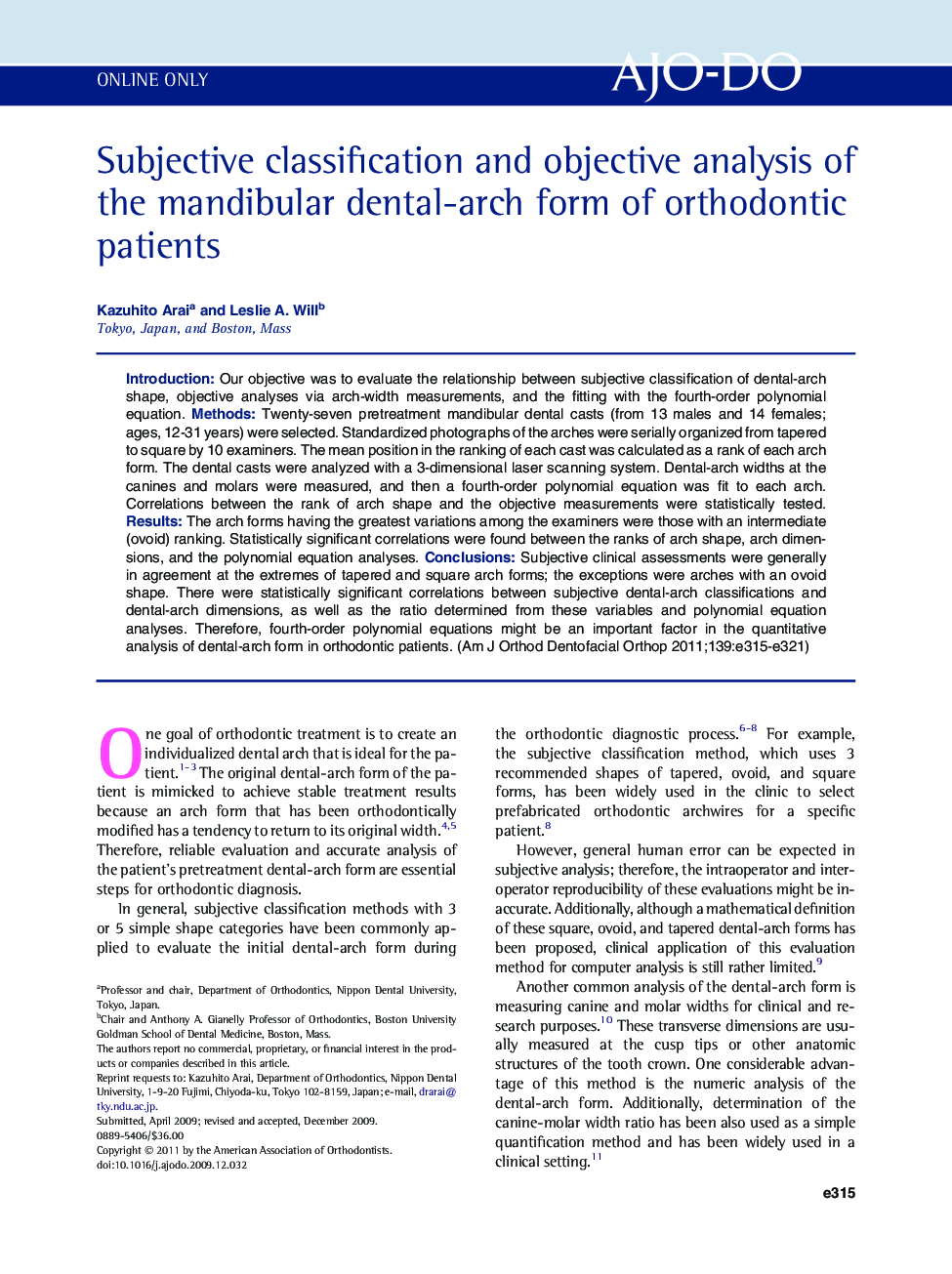| Article ID | Journal | Published Year | Pages | File Type |
|---|---|---|---|---|
| 3117692 | American Journal of Orthodontics and Dentofacial Orthopedics | 2011 | 7 Pages |
IntroductionOur objective was to evaluate the relationship between subjective classification of dental-arch shape, objective analyses via arch-width measurements, and the fitting with the fourth-order polynomial equation.MethodsTwenty-seven pretreatment mandibular dental casts (from 13 males and 14 females; ages, 12-31 years) were selected. Standardized photographs of the arches were serially organized from tapered to square by 10 examiners. The mean position in the ranking of each cast was calculated as a rank of each arch form. The dental casts were analyzed with a 3-dimensional laser scanning system. Dental-arch widths at the canines and molars were measured, and then a fourth-order polynomial equation was fit to each arch. Correlations between the rank of arch shape and the objective measurements were statistically tested.ResultsThe arch forms having the greatest variations among the examiners were those with an intermediate (ovoid) ranking. Statistically significant correlations were found between the ranks of arch shape, arch dimensions, and the polynomial equation analyses.ConclusionsSubjective clinical assessments were generally in agreement at the extremes of tapered and square arch forms; the exceptions were arches with an ovoid shape. There were statistically significant correlations between subjective dental-arch classifications and dental-arch dimensions, as well as the ratio determined from these variables and polynomial equation analyses. Therefore, fourth-order polynomial equations might be an important factor in the quantitative analysis of dental-arch form in orthodontic patients.
